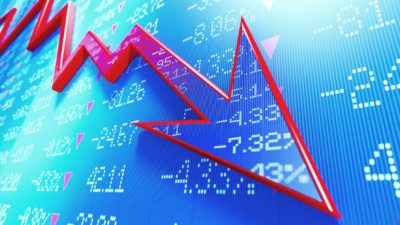This article was originally published on Fool.com. All figures quoted in US dollars unless otherwise stated.
Amazon.com (NASDAQ: AMZN) struggled for much of last year, trailing the S&P 500 by more than 5% in 2019. Then it appeared to get its groove back. Today the stock soared by more than 7%, even as the broader market sank -- taking Amazon's market cap back above $1 trillion, a level it hasn't seen since September 2018.
What caused the price spike? The e-commerce behemoth surprised investors with robust fourth-quarter growth, beating expectations on both the top and bottom lines. Amazon reported revenue of $87.4 billion, up 21% year over year, resulting in earnings per share (EPS) of $6.47. For perspective, Wall Street was expecting revenue of $86.17 billion and EPS of $4.11.
Here are three takeaways from Amazon's report that boosted investor confidence and caused its stock to soar.
1. Prime membership is booming
Amazon has historically been tight-lipped about the ranks of its Prime loyalty subscribers, refusing for years to divulge specific figures, and saying only that there were "tens of millions" of members. In the annual shareholder letter issued in early 2018, CEO Jeff Bezos broke with tradition, revealing that Amazon "exceeded 100 million paid Prime members globally."
The company hadn't issued a follow-up in the nearly two years since -- until now. In its fourth-quarter earnings release, Bezos said (emphasis mine): "Prime membership continues to get better for customers year after year. And customers are responding -- more people joined Prime this quarter than ever before, and we now have over 150 million paid Prime members around the world."
It's well-established that Prime customers are Amazon's most valuable customers, spending far more than the occasional shopper. Prime customers spend about $1,400 per year, on average, 133% more than the $600 spent by nonmember customers, according to a survey conducted last year by Consumer Intelligence Research Partners.
2. One-day shipping drove sales
Amazon made a calculated bet last year when it worked to shorten its standard two-day shipping period to just one day. Since then, the company has spent billions of dollars to make that dream a reality, laying out an incremental $800 million in the second quarter of 2019 alone to beef up its fulfillment and delivery network. Amazon declined to disclose how much it spent in subsequent quarters, but seemed certain that the move would drive additional sales -- particularly over the important holiday season.
The gambit appears to have paid off. Amazon reported a record-breaking holiday quarter, with net sales that increased 21% year over year -- an acceleration from the 20% growth it generated this time last year, adding $15 billion in net sales.
It's worth noting that there might also be a link between faster shipping and record adoption of Prime, as Amazon's ability to to get items to shoppers the following day may have been enough to get some customers off the fence to join the ranks of Prime subscribers.
3. Profits soared
The introduction of one-day shipping had a direct impact on Amazon's bottom line. In the two quarters since the speedier delivery service debuted, the company's profit growth had stalled, even declining year over year in the third quarter. Chief financial officer Brian Olsavsky explained this during the second-quarter conference call: "We expect to see continued ramp[ing up] of the one-day selection availability for the next few quarters, both in North America and international." The costs associated with the initiative were taking a toll on profitability.
Amazon turned things around in the fourth quarter, and the rapid ramp-up in profitability was just the ticket, with EPS soaring more than 57% above analysts' consensus estimates. This illustrates that Amazon, perhaps better than any other company, can ramp down spending to boost profits -- seemingly at will. This also shows why Amazon has been one of the most successful technology stocks over the past decade.
This article was originally published on Fool.com. All figures quoted in US dollars unless otherwise stated.








